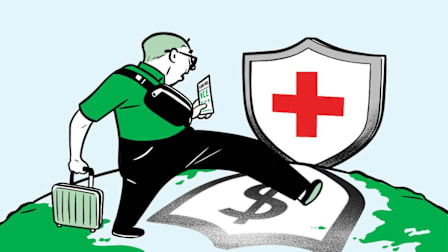Building a Better World, Together

Join with us to make a safer, fairer, healthier marketplace
Getting Plastic Out of Food
Our food travels a complex path to our dinner tables, which increases the risk of contamination from substances that shouldn’t be there. Among these are plasticizers, chemicals used to make plastics more flexible and durable. The most common type of plasticizers, called phthalates, can be found inside the bodies of most Americans and have been linked to a growing list of health risks.
CR has been reporting on plasticizers in food for decades. Our most recent testing examined 85 packaged products, including fast foods and organic foods, and found phthalates in nearly every one. The product with the highest level per serving was Annie’s cheese ravioli.
This is concerning partly because Annie’s, which is owned by food giant General Mills, is an organic food brand that promotes itself to families seeking healthier food options. But four other General Mills products that we tested—Yoplait Original Low Fat Yogurt French Vanilla, Cheerios Original, Green Giant Cream Style Sweet Corn, and Progresso Vegetable Classics Vegetable Soup—also contained relatively high levels of phthalates. So CR wrote the company, urging it to determine where plasticizers are entering its production chains and to take steps to reduce exposure. In May we delivered some 30,000 consumer signatures demanding this action to General Mills’ Minneapolis headquarters.
Now we’re calling on the Food and Drug Administration to set limits on the amount of these risky chemicals in our food. Help by signing our petition at CR.org/fdaphthalates.
99 percent of the food and drinks CR tested contained phthalates
Progress Report
Consumers may soon get relief from dishonest auto-sales tactics, if the Federal Trade Commission’s Combating Auto Retail Scams (or CARS) Rule is enacted. Aimed at bait-and-switch pricing and junk fees, the proposed rule forbids misrepresentations, requires accurate prices in ads and sales materials, and prohibits the sale of worthless add-on products and services. It was scheduled to go into effect July 30 but has been delayed by a trade group lawsuit. For now, stay vigilant: You’ll find tips on which pricey (and often unnecessary) extras to avoid at CR.org/autoextras.
Better Credit Reporting
What’s at stake: Some 15 million Americans have medical debt listed as "in collection" on their credit reports, according to estimates by the Consumer Financial Protection Bureau. Those debts add up to about $49 billion worth of charges.
This is a problem for several reasons. Almost no one chooses to run up large medical debts, which are often a result of unforeseeable crises and inadequate insurance.
In addition, medical billing is notoriously confusing. Patients often get multiple bills and insurance forms for the same visit, and inaccuracies are common.
Yet a credit score lowered due to medical debt can hurt one’s ability to get affordable loans or insurance, rent an apartment, or land a job—even though research has shown that medical billing data on a credit report is less predictive of future repayment than the more conventional, nonmedical credit data that typically appears on credit reports.
What CR is doing about it: CR has long urged state and federal policymakers to ban medical debt from consumer credit reports. New York and Connecticut passed such bans with CR’s support in 2023. And in June, the CFPB proposed a rule that would effectively prohibit medical debts from being listed on credit reports nationwide. The bureau projects that Americans with medical debt on their reports will see their credit scores rise by an average of 20 points if the rule is finalized.
What you can do: Check out our step-by-step guide on what to do if you’re contacted by a collection agent about medical debt.
Editor’s Note: This article also appeared in the September 2024 issue of Consumer Reports magazine.



















